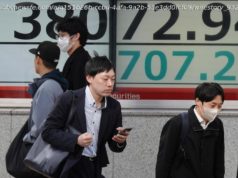The president shelved his predecessor’s trade talks with Europe. Now, he wants to resume similar negotiations.
WASHINGTON — When President Trump called a truce with the European Union over trade, the general outlines of his plan sounded familiar. It echoed of earlier negotiations — the ones started under President Barack Obama and shelved by Mr. Trump last year.
Mr. Trump, in many ways, is taking credit for solving a crisis of his own making. After taking office, he criticized the deals of his predecessor and cut off trade talks with the European Union. He raised the stakes by imposing tariffs on steel and aluminum, prompting retaliatory measures by the European Union. Then he stoked the tensions by calling Europe a “foe.”
Now, Mr. Trump, in hashing out an agreement on Wednesday with president of the European Commission, Jean-Claude Juncker, is declaring victory. He said the two countries would work to lower tariffs and other trade barriers. They would reduce bureaucratic roadblocks to industrial goods flowing across the Atlantic, while ending conflicting regulations for drugs and chemicals.
The United States was pursuing much the same under Mr. Obama through a deal called the Transatlantic Trade and Investment Partnership. And the collapse of the deal still smarts for large segments of American and European business who had fervently hoped to create a trans-Atlantic version of the North American Free Trade Agreement. The European Union has repeatedly told the Trump administration that it would be happy to revive trade talks.
“Most of the deal is stuff we were already on the verge of agreeing on in the T. I. P. negotiations, before that deal got deep-sixed after Trump’s election,” said Rufus Yerxa, the president of the National Foreign Trade Council, which represents exporters. “But at least the President is talking about more open trade instead of how great tariffs are.”
Both European and American officials resisted comparisons to previous negotiations. But it was not immediately clear what would set the new talks apart from those carried out by the Obama administration, beyond their more limited scope. Unlike with the previous round of negotiations, European officials said that the agricultural sector would be excluded from a deal with the Trump administration.
Speaking from Air Force One on Thursday, the commerce secretary, Wilbur Ross, called the European Union’s willingness to negotiate a “real vindication of the president’s trade policy.”
“If we hadn’t had steel and aluminum tariffs, we never would have gotten to the point we are now,” Mr. Ross said.
“The major progress today is that our American friends agreed not to increase tariffs on cars and other products during the negotiation, which is a major concession by the Americans, I have to say,” Mr. Juncker told reporters after the meeting in Washington.
Mr. Trump’s aggressive posture has helped him gain leverage on the trade front with countries like China. But his confrontational approach has also strained relations with vital allies like the European Union.
It is possible that Mr. Trump has changed the political calculus for Europeans. They are frightened by the prospect of escalating tariffs with their largest trading partner.
Penalties on foreign cars and auto parts were especially worrisome for Europe, where the industry is a big economic driver. Mr. Trump will postpone imposing them to see how the negotiations progress.
“The Europeans have to ask themselves, ‘Do we want a trade war or a trade pact?’” said Gabriel Felbermayr, director of the ifo Center for International Economics in Munich. “Before it was a choice between a pact and the status quo.”
Among European business leaders, there was cautious optimism that the meeting between Mr. Trump and Mr. Juncker could signal a return to the cooperative relationship that once prevailed between Europe and the United States.
“We would see this as a step in the right direction,” said Susan Danger, chief executive of the American Chamber of Commerce to the European Union in Brussels. “Work on these areas first, build up trust, and then we work on progress toward other areas.”
Whether the announcement turns into a signed trade deal is not exactly assured.
Europeans continue to question whether a president with an expressed fondness for tariffs is negotiating in good faith. Diplomats, officials and analysts in Europe worry that Mr. Trump could easily pivot back to the hostility he showed toward European leaders at the G7 summit meeting in Canada in June or the NATO summit meeting in Brussels this month.
“It buys time. Potentially it could be more,” Jörg Krämer, chief economist at Commerzbank in Frankfurt, said of the agreement between Mr. Trump and Mr. Juncker. But Mr. Krämer added, “Trump is a protectionist, and we can’t rule out this was just a tactical move.”
Other portions of the plan lack detail or sound unrealistic. Although Mr. Trump said the European Union had promised to purchase more natural gas and soybeans, the market there is dominated by private companies. And the various national governments in the 28-member bloc may have a tough time influencing their purchases.
Mario Draghi, the president of the European Central Bank, was not ready to sound the all clear. He said Thursday that broad trade tensions remained a risk to the world economy.
“Uncertainties related to global factors, notably the threat of protectionism, remain prominent,” he said at a news conference in Frankfurt.
The trade talks did not go smoothly under Mr. Obama, either.
Europe and the United States started their trade talks in 2013 in an effort to cut regulations as well as expand trade and investment. But the talks dragged on over divisions over pharmaceuticals, consumer safety and investment rules.
In Europe, the deal ran into resistance from critics who complained that the negotiations were held largely in secret. A big worry was that companies would exploit a trade pact to water down regulations on the environment and food safety.
Germans were among the most strident opponents of a trans-Atlantic trade deal, even though the country’s auto industry was strongly in favor of removing tariffs. In 2016, thousands of people marched in Berlin to protest the proposed deal.
When Mr. Trump was elected, the negotiations fell apart.
One of the most toxic parts of the prior deal, an investment court that allows businesses to sue governments for unfair treatment, would likely not be part of future talks. Mr. Trump’s advisers have criticized these courts and insisted on removing them from Nafta.
Opposition groups signaled on Thursday that they would keep a close eye on what emerges from this new attempt to dismantle trade barriers.
Home
United States
USA — mix Trump’s Trade Truce With Europe Has a Familiar Feel: It Mirrors Obama’s...






